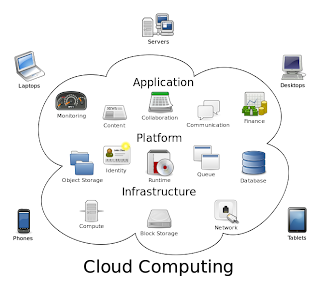 The definition of "cloud" in cloud computing can be described as the set of hardware, storage, services, networks, and interfaces that join together to supply aspects of computing as a service. Cloud services incorporate data storage over the Internet, infrastructure, and delivery of software based on end user demand.
The definition of "cloud" in cloud computing can be described as the set of hardware, storage, services, networks, and interfaces that join together to supply aspects of computing as a service. Cloud services incorporate data storage over the Internet, infrastructure, and delivery of software based on end user demand.
There are four vital aspects of cloud computing:
1. Flexibility and the capacity for scaling up and down.
2. Application Programming Interfaces (APIs)
3. Self-support provisioning and mechanized deprovisioning.
4. A pay-as-you-go model for billing and metering of service usage.
Cloud computing is available in multiple forms such as; private clouds, public clouds, and a combination of the two - called a hybrid.
People that use cloud computing services are:
- Cloud service providers who manage IT assets and maintenance.
- Business executives who must be accountable for the management of their services and data being stored on the cloud. Cloud providers must make sure their networks are stable and secure.
- Personal users that are not aware of the behind the scenes technology in place.
Businesses that use cloud computing have found that it can eradicate a large amount of complicated obstacles that traditional computing comes with, including time, space, cost and power - completely changing the way they are using technology to service their clients. But, there is a down side if the company you choose does not have proper security or their servers go down. It may be best to use cloud only as a back-up for redundancy.

No comments:
Post a Comment